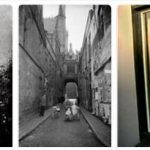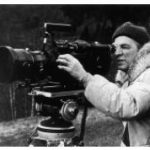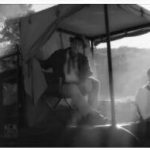In the South Africa (proclaimed May 31, 1961), more than in other countries of the continent, the birth and development of cinema were linked to the political situation and the harsh apartheid regime established by the white minority in power. The racial laws and the repression, first by the British and then by the Boers, against the black majority have also prevented, for almost a century and except in cases of militant counter-information, the spread of non-English or Afrikaaner (Afrikaander) cinematography: South African cinema lived in this paradox from the 1910s to the 1980s.
The segregationist policy of apartheid and cinema
The first pioneering screenings are due to Thomas A. Edison and William Paul in Johannesburg in 1895-96, followed by newsreels of the Anglo-Boer War (1889-1902). In 1910 the reconciliation between the British and the Boers allowed the creation of the South African Union, a British dominion endowed with governmental autonomy, in which the economic and political power rested entirely in the hands of the white minority. In that same year, the first feature film, The Kimberley diamond robbery, was produced by Springboks Films, while in 1913 the cinema news was born with African mirror, a series of weekly newsreels made up to 1984, in which precise traces of politics are constantly traced. of racial discrimination. Equally, in what is considered the first feature film in the history of South African cinema, De Voortrekkers – Winning a continent (1916), made by Harold Shaw and African Film Limited, the colonial content is evident from the title. African Film Productions (AFP) was the only production company active from 1916 to 1933, a period in which South African cinema consolidated its presence with a series of fictional titles in English (with the exception of De Voortrekkers, in Afrikaans and English; Sarie Marais, and Moedertjie, both from 1931 and by Joseph Albrecht, and ‘n dogter van die veld, 1933, A daughter of the veld, by unknown director, in Afrikaans). Among the most prolific directors, besides Shaw and Albrecht, are Lorrimer Johnston, BF Clinton, Dick Cruikshanks, Lisle Lucogue (author of the adventurous King Solomon’s mines, 1918, and Allan Quatermaine, 1919). The Italian Attilio Gatti, on the occasion of an expedition to the lands of the Zulu, shot the anthropological film Siliva zulu (1927). In the Thirties and Forties, production was drastically reduced and the monopoly of AFP ended; other production houses appeared on the market and the Afrikaans language took over the English language. J. Albrecht made Die bou van ‘n nasie (1939, They build a nation). Pierre de Wet and Arthur Bennet were among the filmmakers who directed films with greater continuity. At the end of the 1940s, director and producer Donald Swanson’s debut in cinema was a milestone: his Jim comes to Jo’burg (1949), the story of a man who leaves the countryside to try his luck in Johannesburg and is introduced by a friend to the nightclub scene, it is an opera where music plays an essential role and is the first film to be played entirely by black actors. Music is still the protagonist in The magic garden (shot in 1950, but screened in the South Africa only in 1961): Swanson made a choral film in which the element that unites the various stories is the money that passes from one character to another. AFP also produced a major musical film, Hyman Kirstein’s Zonk (1950), performances by black musicians who, thanks to jazz, fight poverty and the degradation of everyday life in the townships. For South Africa 2008, please check payhelpcenter.com.
Although the regime of racial segregation imposed even more restrictive laws for black artists, favoring the increase of films in Afrikaans with the system of subsidies on receipts, the 1950s were very significant for South African cinema. In 1951 Jamie (owner Johannes Jacobus) Uys made his directorial debut with the amateur film Daar doer in die Bosveld (Far in the veld). Director and producer, independent author who, however, did not disdain government subsidies, Uys founded the Jamie Uys Film Company in 1954 and became the first director to counter the monopoly of the South African major, making above all popular comedies to tell, with an ambiguous and often racist gaze, the social contrasts in his country in works such as Fifty Vyftig (1953), Lord omm Piet (1962, Lord uncle Pete) or in the comic diptych The gods must be crazy (Ma cheiamo tutti matti?) And The gods must be crazy II (Up there someone is crazy), respectively from 1980 and 1989, also distributed in Italy during the embargo to the South Africa because the production was from Botswana. Among Uys’s other films, Dingaka (1964; The Giant of the Hawk’s Rock) is also worth mentioning, in which the differences between white and black justice are examined. Emil Nofal described in Song of Africa (1951) the passion of a young Zulu for jazz and the success he achieved with his band. Two foreign directors signed as many feature films that became real ‘South African films’: the first, Cry, the beloved country (1952) by Zoltan Korda tells the story of a black priest in Johannesburg (where he discovers how city life has corrupted his family) and counts among the actors the pioneer of black South African cinema Lionel N’Gakane; the second, Come back, Africa! (1959; Africa in crisis), Lionel Rogosin’s masterpiece filmed clandestinely, describes the conflicts and class struggles of blacks between documentary and fiction following the dramatic story of a man looking for work in Johannesburg.








